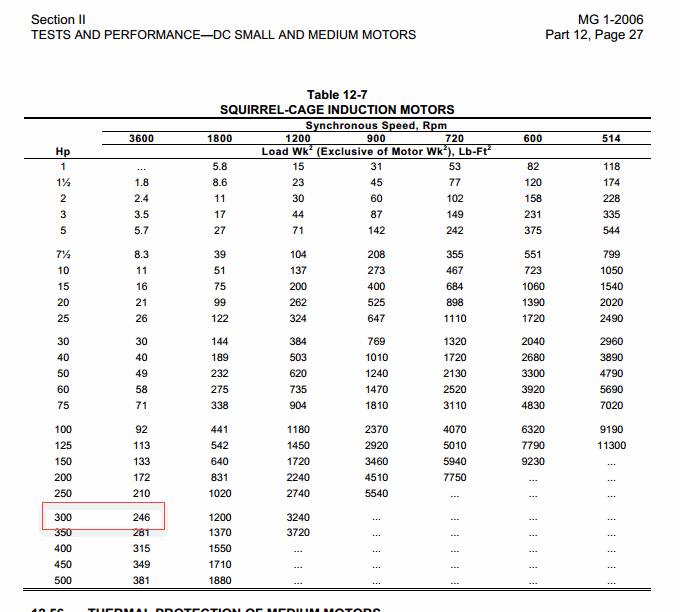Hi,
I am working with a spec that states "Load inertia within NEMA MG 1 (when load inertia is greater than NEMA MG 1, use API STD 541 motor)." I've looks through NEMA MG 1, and I'm having trouble understanding exactly what to look for. I've calculated that my Load Inertia is 246.03 lb-ft² for a particular 300HP 3600rpm motor, but do not know if that is considered greater than NEMA MG 1. Would someone please explain?
Thank you!
Ian
I am working with a spec that states "Load inertia within NEMA MG 1 (when load inertia is greater than NEMA MG 1, use API STD 541 motor)." I've looks through NEMA MG 1, and I'm having trouble understanding exactly what to look for. I've calculated that my Load Inertia is 246.03 lb-ft² for a particular 300HP 3600rpm motor, but do not know if that is considered greater than NEMA MG 1. Would someone please explain?
Thank you!
Ian

